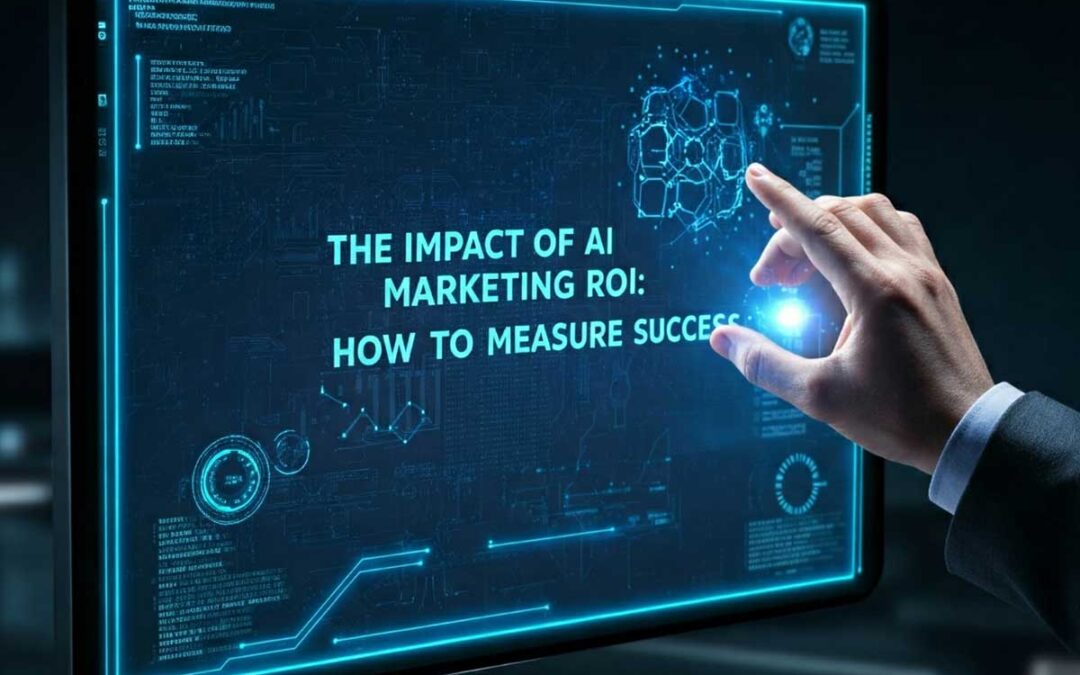A Director of Digital Innovation at a Fortune 500 retail company faced a familiar challenge. Her team had invested significantly in AI-powered marketing tools, but quantifying their impact proved more complex than traditional marketing metrics could capture. This scenario echoes across industries as marketing leaders work to measure and communicate the true value of their AI investments.
The Evolution of Marketing Measurement
The marketing landscape has fundamentally shifted from the days when simple metrics like click-through rates and cost per acquisition told the whole story. According to McKinsey’s 2023 “State of AI” report, companies successfully integrating AI into their marketing operations see revenue increases ranging from 3% to 15% – but achieving these results requires sophisticated measurement approaches that go beyond traditional metrics.
Understanding the Real Impact: A Tale of Two Approaches
Consider the contrasting experiences of two global retailers documented in the Harvard Business Review‘s 2023 retail innovation study. The first implemented AI-driven personalization without establishing proper measurement frameworks, resulting in unclear ROI and stakeholder skepticism. The second took a methodical approach to measurement, tracking both immediate impacts and long-term value creation. Their results showed a 40% increase in customer engagement and a 22% increase in conversion rates through AI-driven content recommendations.
Key Measurement Strategies for AI Marketing Success
The Multi-Channel Attribution Challenge
Gartner’s research highlights a significant shift: by 2025, 60% of B2B sales organizations will transition from experience-based to data-driven selling approaches. This transition requires sophisticated measurement frameworks that can capture value across multiple touchpoints.
A prominent telecommunications company, as documented in MIT Sloan Management Review, developed a comprehensive measurement approach that revealed their AI-driven campaigns were actually undervalued by traditional attribution models.
Operational Efficiency Metrics
According to McKinsey’s analysis, organizations implementing AI in their marketing operations typically see customer service costs decrease by 15-20%. This operational efficiency component often goes unmeasured in traditional ROI calculations.
Best Practices from Industry Leaders
Start with Clear Baseline Measurements
A global consumer goods company, featured in the Journal of Marketing Research, demonstrated the importance of establishing clear baselines. They documented their metrics across all channels before implementing AI solutions, allowing them to accurately measure improvements.
Focus on Long-term Value Creation
Deloitte’s Digital Transformation Survey reveals that organizations focusing solely on short-term metrics often miss up to 40% of AI’s value creation. This finding has fundamentally changed how industry leaders approach AI marketing measurement.
Adobe’s transformation of their Marketing Cloud platform provides a compelling case study. After implementing a comprehensive long-term measurement framework, they discovered their AI-driven personalization created substantial hidden value, with customers showing a 27% higher retention rate over three years.
The 2023 State of Marketing Report from Salesforce identifies several critical long-term metrics organizations should track):
- First, customer behavioral patterns provide deep insights into AI’s long-term impact. This includes tracking multi-year purchase frequency changes, cross-category purchasing evolution, and the development of brand advocacy behaviors.
- Second, brand health indicators reveal AI’s broader influence. Companies achieving the highest ROI combine traditional metrics like Net Promoter Score with AI-powered sentiment analysis across multiple touchpoints.
McKinsey’s research demonstrates why these long-term metrics matter. Their analysis of over 500 companies reveals that organizations tracking only short-term metrics typically undervalue their AI investments by 25-35%.
The key is balance. Leading organizations like Procter & Gamble have developed frameworks weighing immediate performance indicators (40%) against long-term value metrics (60%). This approach has helped them identify that AI-driven marketing initiatives deliver nearly three times more value than calculations based on short-term metrics alone.
Real-World Success Stories
A particularly illuminating case comes from a major financial services provider, documented in the International Journal of Bank Marketing Case Study. They implemented an AI-driven personalization system and measured its impact through a comprehensive framework, showing significant improvements across multiple metrics.
Looking Ahead: The Future of AI Marketing Measurement
The Boston Consulting Group’s latest research suggests that organizations that automate 50% or more of their marketing activities are significantly more likely to exceed their revenue goals.
Conclusion
The impact of AI on marketing ROI is substantial and measurable, but only when approached with the right framework. Success requires a balanced measurement approach that captures both immediate performance improvements and long-term value creation.

